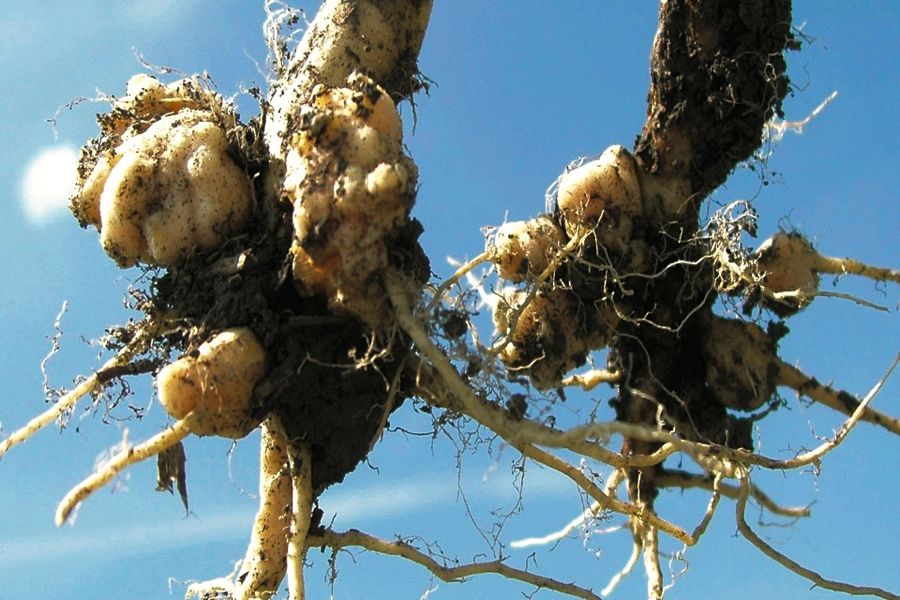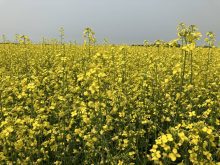Back in 2015, I was in Australia, talking to farmers and others in agriculture about how they were handling herbicide resistance. Australian farmers have the unenviable task of dealing with weeds that are resistant to several modes of action. The country ranks number two globally for the number of herbicide-resistant weeds.
During that trip, Brad Collis, editor of Ground Cover, said something that’s stuck with me. Australian researchers have eliminated the stigma attached to having herbicide-resistant weeds, he said.
“So people report it immediately. And that’s really important if you’re going to get on top of this,” said Collis.
Read Also

Gentle treatments for pain in the neck
Heading toward year-end, people unknowingly tense up against the cold and busyness, causing neck pain that can often be treated with appropriate support and gentle mobility, athletic therapist Kathlyn Hossack says.
That comment started to change how I thought about agronomic problems such as herbicide resistance. I hadn’t seriously considered how important it is to have the right mindset to deal with these problems.
Fast forward to December 2017. Kent Lamoureux was speaking about clubroot at Cavalier Agrow’s farm forum. Lamoureux is an agronomist in Alberta’s Sturgeon County, the first Alberta county to confirm clubroot infestations in canola. Lamoureux had practical advice for proactively managing clubroot. But, most intriguing, he compared finding clubroot on your farm to going through the grieving process.
Lamoureux isn’t the only one thinking this way. John Guelly, who farms near Westlock, Alberta, talked about the same thing during Crop Sphere in Saskatoon this January. And when I spoke to Manitoba psychologist Greg Gibson, he confirmed that a farmer facing clubroot could go through the grieving process.
It seems to me very tragic and unnecessary to feel shame over having clubroot, or herbicide-resistant weeds, or any other agronomic problem confirmed on your farm. To put things in perspective, it’s not as though you’ve been caught kicking puppies. Having clubroot or herbicide resistance does not make you a bad person.
Maybe you feel guilty about your tight rotations. After all, tight rotations do worsen problems like clubroot and herbicide resistance. Even a two-year break from canola cuts the number of clubroot spores by over 90 per cent, making it extremely effective when spore loads haven’t reached critical levels.
But I talk to farmers all the time with tight rotations. They’re concerned about agronomic problems, but economics, logistics and all kinds of other factors come into play. So even if your rotations are tight, I don’t think it’s fair to call you a “bad farmer,” because that would mean a huge proportion of Western Canadian farmers are bad.
Removing the stigma
Western Australia was the first region to develop herbicide resistance. At first, farmers there didn’t know what was going on, Collis said. But between scientists and researchers, they figured out what the problem was. Farmers in the rest of Australia had the advantage of seeing the cost of herbicide resistance before they had any experience with it.
Clubroot is not strictly an “Alberta problem.” It has already been confirmed in Saskatchewan and Manitoba, and it’s likely more widespread in both provinces than official reports. But clubroot hammered Alberta canola growers first, giving Saskatchewan and Manitoba a chance to learn from their western neighbours.
Policies and regulations around cropping practices should be fair and science-based. They should not feed into any social stigma. And municipalities and other agencies should not discourage farmers from reporting and dealing with early clubroot infestations.
Manitoba has no regulation around the disease yet. From what I’ve gleaned, provincial agronomists focus on education and deal with it on a case-by-case basis.
In both Alberta and Saskatchewan, clubroot has been declared a pest, which empowers counties and municipalities to enforce their own bylaws around prevention and enforcement. Saskatchewan’s municipal leaders would be wise to see what’s worked well and what hasn’t in Alberta before they try to regulate farming practices.
Kevin Hursh had a column in the October 17 issue of the Western Producer about using Sask Crop Insurance to encourage longer crop rotations. Since a one-year break between canola is so common, Hursh suggested focusing on the canola-canola rotations instead. In those cases, the farmer could pay the full premium themselves. Hursh points out that this type of carrot-stick system has already been done with chickpeas, to control ascochyta blight.
I’m not sure what the right answer is, but I like this idea better than having a patchwork of municipal bylaws. I think it would be less of an emotional bombshell than nailing farmers who’ve just found out they have clubroot. It also seems fairer than punishing people who have scouted for the disease.
If Sask Crop Insurance adopted this policy, they could also consider rewarding farmers with a three-year or longer rotation by giving them breaks on premiums. After all, a longer rotation reduces the risk of many other crop diseases, along with herbicide resistance.
Whatever approach government and industry take, we all need to remember that issues like clubroot are not moral failings. They are agronomic problems, and they can be managed.
So if you’re facing these problems, don’t be too hard on yourself. And if your neighbour is struggling with these kinds of problems, don’t be too hard on him either.
















